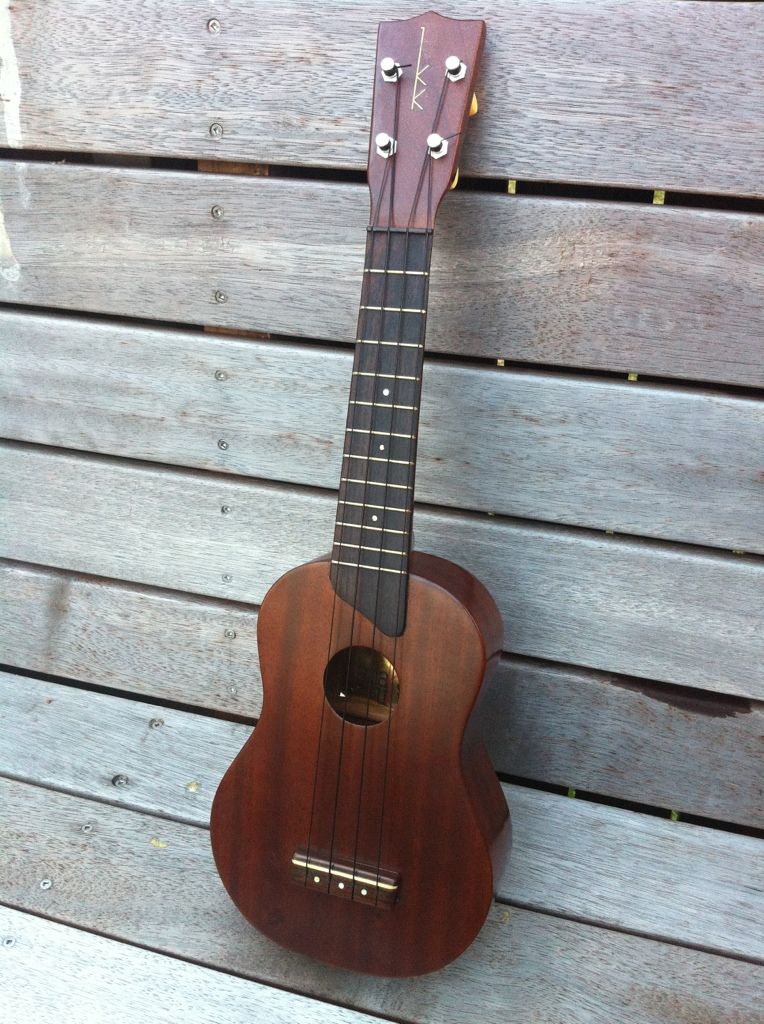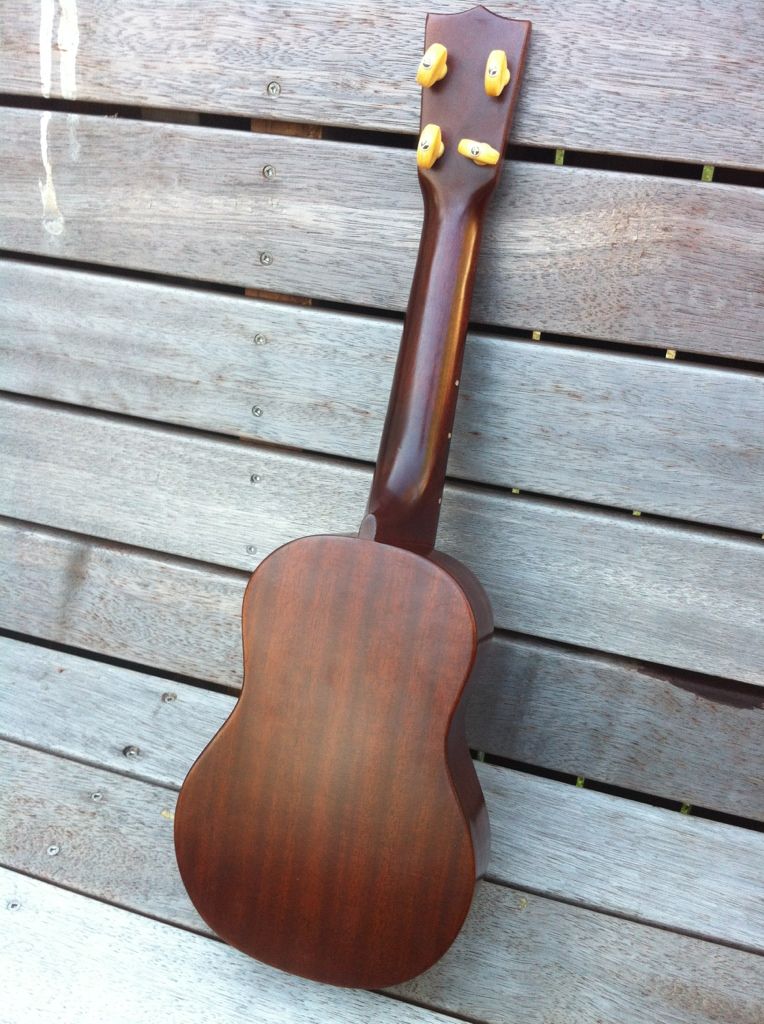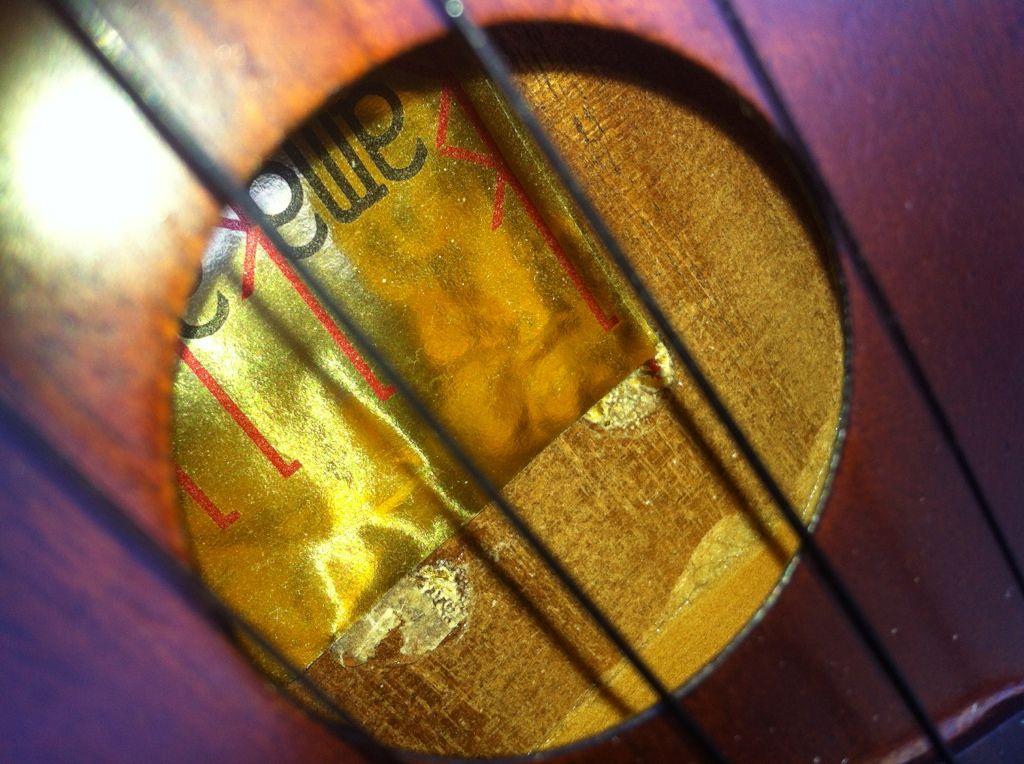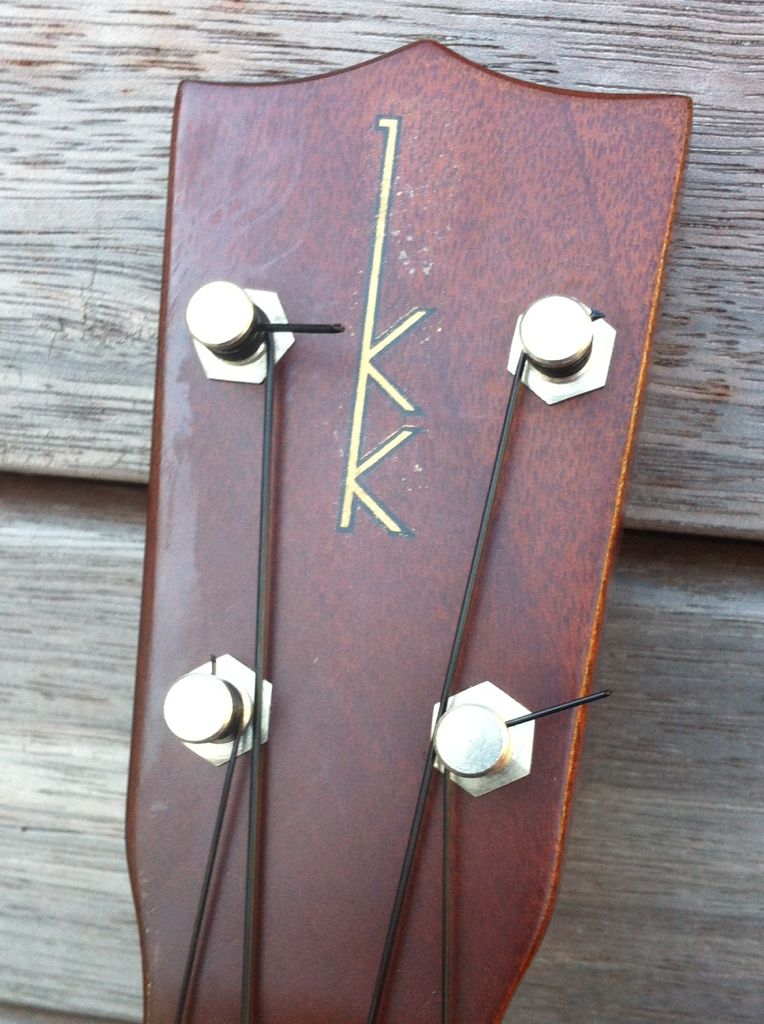AntipodesAndrew
Member
Hi all, i'm very new to Ukes but am well and truely hooked. just bought what I believe and hope is a real Kamaka Gold label. First off I have to say the sound is really bright and loud- a lot more than my other new Timberidge Tiki concert which is muted in comparison. However, I have a coupla questions i'm hoping experts will be able to answer...
First off is it the real deal and i've not bought one of those Japanese copies? The colour of this one is a lot darker than all others i've (only seen in pictures). It looks to be the original finish.
Second, theres some wierd glue spots inside partly exposed behind the top of the label, as if the lael has slipped down? Wierd. The decal looks fine and there's no other marks anywhere on it. It also has its old original black blue belvet lined case.
Thirdly, the strings. As I mentioned i'm a complete novice so I tend to drag my fingers changing chords and the effect of this is that theres a distinct rasping sound on the strings- quite loud which i'm actually hoping is a good thing as it means it's amplifying sounds really well. I guess when I get better that will reduce. The strings are also quite grippy, meaning that they're not slippery like a lot of nylon strings.
Fourthly, tuning it is tricky as it's easy to climb over the not or go under with the slightest twist- which is probably just due to not having gears. Also she can go out of tune pretty easily.
In all i'm really happy with this dainty little thing and I hope all's well with it. I wanted to get something that I could keep for a very long time and that my kids will also love. Going on what I have found out so far if it's real it dates anywhere between 1954 to '69 but most likely late 60's?
Here are the shots and please chip in with your thoughts. I have a heap of others but was limited to posting 4 only.




First off is it the real deal and i've not bought one of those Japanese copies? The colour of this one is a lot darker than all others i've (only seen in pictures). It looks to be the original finish.
Second, theres some wierd glue spots inside partly exposed behind the top of the label, as if the lael has slipped down? Wierd. The decal looks fine and there's no other marks anywhere on it. It also has its old original black blue belvet lined case.
Thirdly, the strings. As I mentioned i'm a complete novice so I tend to drag my fingers changing chords and the effect of this is that theres a distinct rasping sound on the strings- quite loud which i'm actually hoping is a good thing as it means it's amplifying sounds really well. I guess when I get better that will reduce. The strings are also quite grippy, meaning that they're not slippery like a lot of nylon strings.
Fourthly, tuning it is tricky as it's easy to climb over the not or go under with the slightest twist- which is probably just due to not having gears. Also she can go out of tune pretty easily.
In all i'm really happy with this dainty little thing and I hope all's well with it. I wanted to get something that I could keep for a very long time and that my kids will also love. Going on what I have found out so far if it's real it dates anywhere between 1954 to '69 but most likely late 60's?
Here are the shots and please chip in with your thoughts. I have a heap of others but was limited to posting 4 only.





